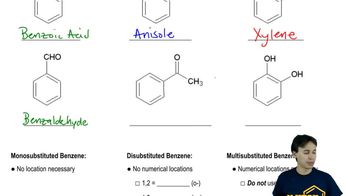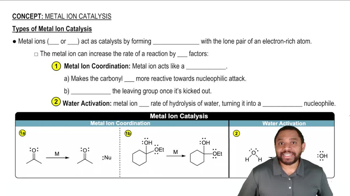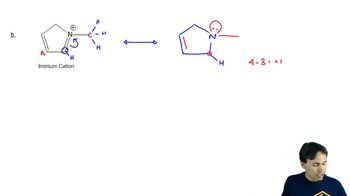Show how you would convert aniline to the following compounds.
(g) phenol
 Verified step by step guidance
Verified step by step guidance Verified video answer for a similar problem:
Verified video answer for a similar problem:



 0:43m
0:43mMaster Proposing Aromatic Synthesis with a bite sized video explanation from Johnny
Start learning